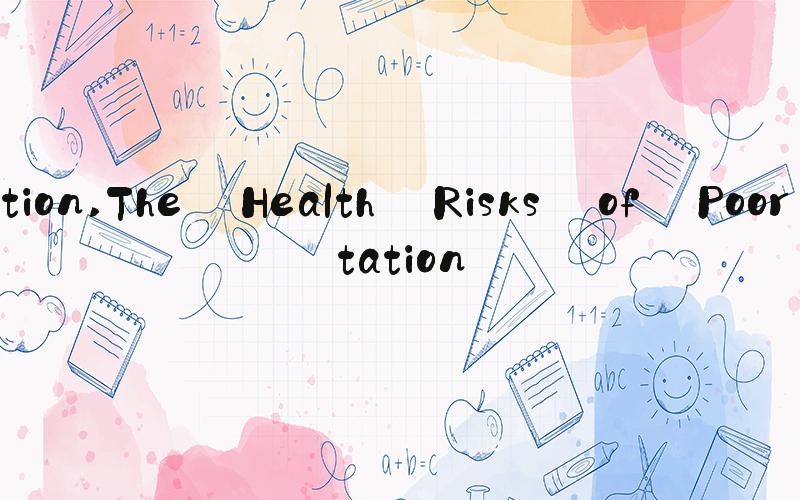AI答案
 Sanitation: The Key to a Healthy and Sustainable Future
Sanitation: The Key to a Healthy and Sustainable FutureSanitation, which is the provision of facilities and services for the safe disposal of human waste and the promotion of good hygiene practices, is a fundamental human right and one of the critical factors that contribute to the well-being of individuals and communities. Despite its importance, however, sanitation remains a significant global challenge, with an estimated 4.2 billion people lacking access to basic sanitation facilities, and 2 billion people lacking access to safe drinking water. This article explores the importance of sanitation and the efforts that are underway to promote it as a key component of sustainable development.
The Health Risks of Poor SanitationPoor sanitation has numerous detrimental effects on human health, including the spread of infectious diseases such as cholera, typhoid, and diarrhea. According to the World Health Organization, diarrheal diseases alone cause approximately 1.5 million deaths annually, with most of the victims being children under five years of age. Poor sanitation also contributes to the spread of other illnesses, including hepatitis A, polio, and trachoma. The absence of proper sanitation facilities, such as toilets and hand hygiene stations, also leads to the accumulation of solid and liquid waste, which can attract insects and vermin, exposing individuals to a range of vector-borne diseases.
The Environmental Impact of Poor SanitationPoor sanitation also has severe environmental consequences. The lack of adequate waste disposal systems contributes to the accumulation of waste, which can pollute water sources, contaminate soil, and compromise air quality. Contaminated water sources, in turn, can damage aquatic ecosystems and pose health risks to humans and animals that rely on these resources for survival. The lack of safe sanitation also contributes to the release of greenhouse gases, including methane, which is a potent contributor to global warming.
Promoting Sustainable SanitationRecognizing the significance of sanitation as a critical component of sustainable development, the United Nations has made it a top priority in its Sustainable Development Goals (SDGs). Specifically, SDG 6 aims to ensure access to clean water and sanitation for all by 2030. Achieving this goal requires a multi-pronged approach, including the improvement of infrastructure, the provision of education and awareness campaigns regarding the importance of good hygiene practices, and the engagement of stakeholders at the local, national, and international levels to promote sustainable sanitation practices.
The Role of Innovation in SanitationIn addition to traditional approaches to sanitation improvement, innovation also plays a significant role in promoting sustainable sanitation. New technologies, such as composting toilets and waterless sanitation systems, offer viable solutions to sanitation challenges in areas where traditional infrastructure is cost-prohibitive or otherwise not feasible. Innovation also provides opportunities to tailor sanitation solutions to the unique needs of individual households or communities, including those in remote or extreme environments.
The Bottom LineSanitation is a critical component of sustainable development, promoting good health, preserving the environment, and contributing to economic growth. Achieving SDG 6, which aims to ensure access to clean water and sanitation for all by 2030, requires a concerted effort from all stakeholders, including governments, the private sector, and civil society organizations. By prioritizing sanitation, we can build a healthier, more sustainable future for all.
